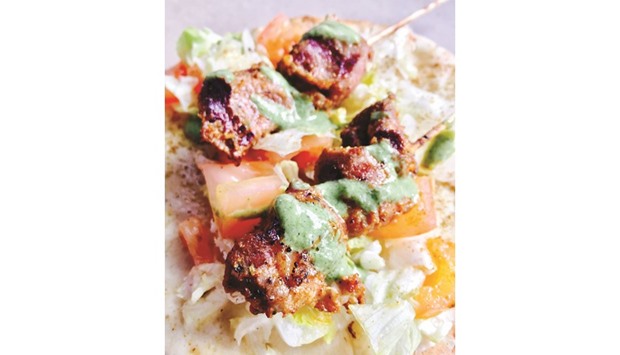We all know about the skewered cooked meat morsels that go by “Shish Kebab,” but many may not know the meaning. The word “shish” means sword and “kebab” refers to the roasting or grilling of meat, mostly lamb or mutton. These kebabs were initially cooked by warriors on their swords over spit fires. Later these became so popular that different marinades were made especially to tenderise the meat and flavour it and make it more palatable and exotic.
The varieties of kebabs are seemingly endless. Every culture, region and country has their own set of kebab dishes, which have been formed after years of cooking and experimentation.
The pieces are cut small so that the kebab cooks faster, the meat remains moist while cooking as it does not stay on the fire for long, and smaller pieces of meat are also easier to eat without any cutlery or additional serve ware required. They also use less fuel to be cooked.
As food travels from one country to another, the recipe, the ingredients used and method of cooking also changes significantly. To explain let’s take the example of kebabs from Greece and Turkey: the morsels are similar sized and spiced but are layered with hunks of tomato, onion, bell pepper. This makes it more colourful and presentable with the added flavour of vegetables along with the meat resulting in a dish known as shashlik in Eastern Europe. This type of kebab became more popular, was a bit more cost effective and looked more elegant than the all-meat version.
Kebab travelled in almost every possible direction and also went along the silk route through the traders, who found cooking small morsels of meat over an open flame on a stick quick, cheap and efficient. In the vast Indian subcontinent, several other variants involving the ground lamb, chicken, vegetables were made and became popular.
Different states in India prepared these in the locally available ingredients and spices and tried to distinguish and create a better kebab then others. Awadhi cuisine is an example of how the common food dishes were enriched and prepared in a royal way to make them special and more authentic.
The kebabs then travelled to far eastern countries like Indonesia, Malaysia, and Singapore and took the form of Satay, with a different marinade using the locally available ingredients like galangal, lemon grass, lime leaves and coconut. Further, the kebabs travelled to Japan and became popular by the Yakitori style of cooking, which can put nearly any cut of meat or even vegetables on stick.
The below mentioned recipe is one of my recent favourites, in which I make a sandwich with naan bread. The protein used is the lamb boti kebab. Please try this recipe and share your feedback.
Lamb Naanwich
Ingredients
Lamb boneless cubes 600 gm
Ginger paste 1 tbsp
Garlic paste 1 tbsp
Hung yoghurt ½ cup
Raw papaya paste 1 tbsp
Cumin powder ½ tsp
Black pepper powder 1/3 tsp
Coriander powder 1 tsp
Red chilli powder 1/3 tsp
Garam masala 1 tsp
Cashew nut paste 2 tbsp
Brown onion paste 1 tbsp
Cardamom powder 1/3 tsp
Coriander and mint paste 1 tbsp
Green chilli paste ½ tsp
Salt to taste
Wooden skewers 12 pcs
For naanwich wrap
Naan bread 6 pcs
Ice berg lettuce 1 head
Tomato, diced 1 no
Mint sauce ½ cup
Chat masala ½ tsp
Method
Wash and pat dry lamb cubes and keep in a bowl.
In a separate bowl, combine hung yoghurt, ginger and garlic pastes, chilli paste, cumin powder, raw papaya paste, coriander powder, garam masala, coriander paste, mint paste, black pepper, and salt. Whisk to combine.
Slice onions and deep fry them to golden brown colour.
Blend the deep fried onion with cashew nut to get a smooth paste.
Combine the cashew nut paste with the spice blend.
Add the prepared marinade to the lamb cubes and refrigerate for four hours or, preferably, overnight.
Skewer the lamb cubes on wooden skewers and grill on medium heated grill from both the sides to cook evenly.
Baste with butter to keep the meat moist and brown the meat from outside.
Once cooked, remove from grill and keep aside.
Heat the naan bread, lightly brushed with butter, on the grill to warm it up.
Place some shredded lettuce on top, followed by the grilled lamb skewer, pull out the wooden skewers and drizzle some mint sauce on top followed by some chat masala.
Wrap the naan bread in sandwich paper to make a roll and serve hot.
* Chef Tarun Kapoor,
Culinary Mastermind, USA. He may be contacted at [email protected]

